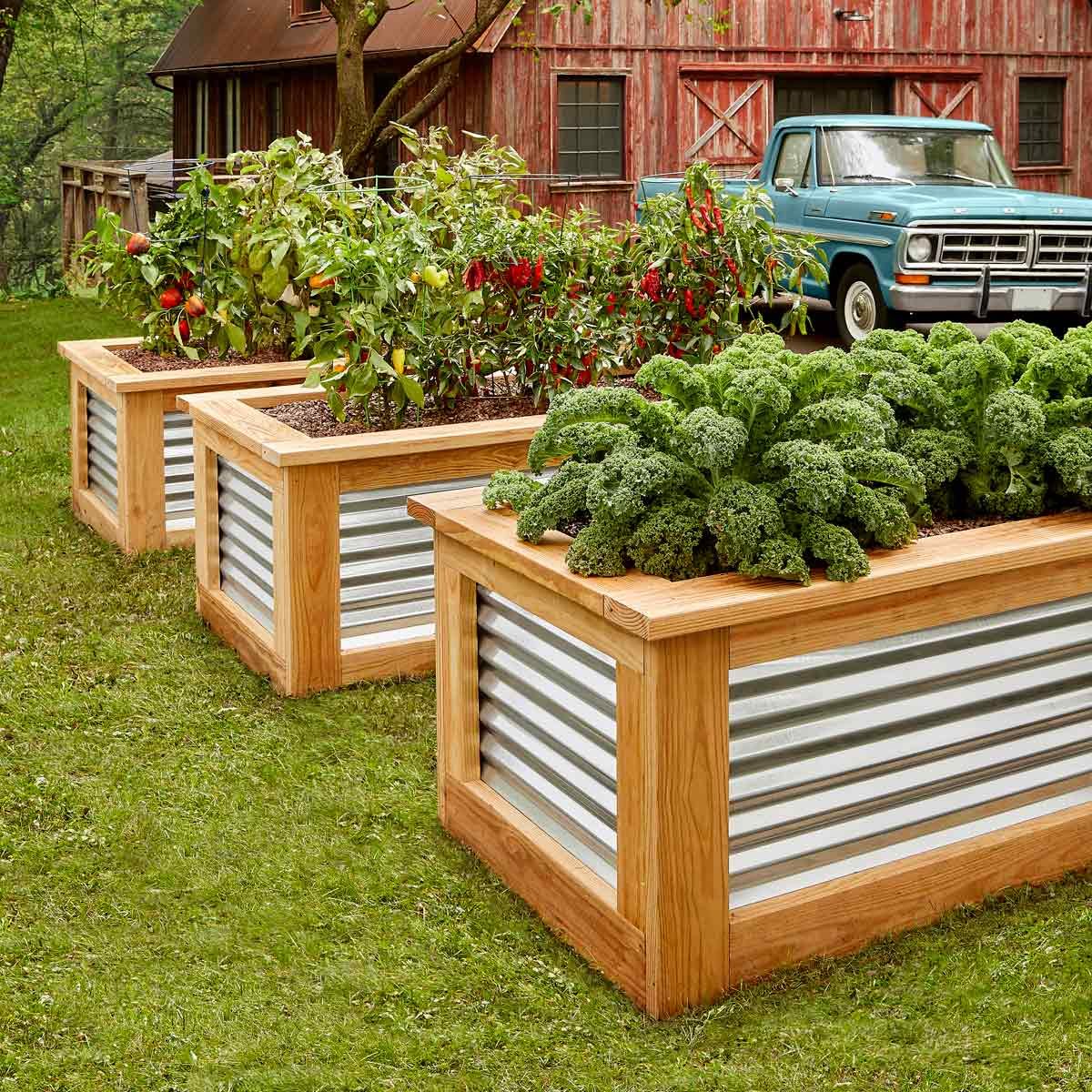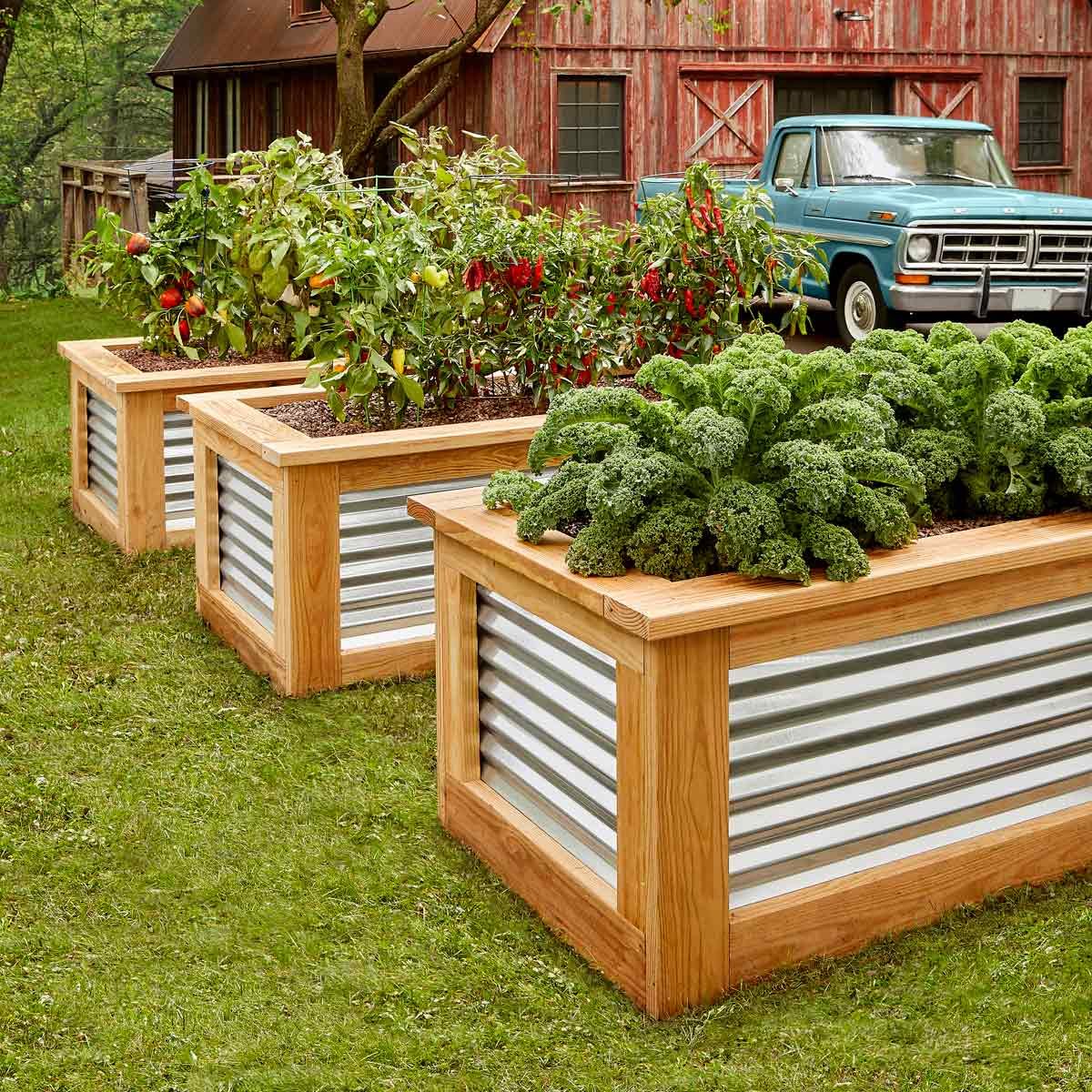DIY raised garden beds offer a fantastic way to grow your own fresh produce, herbs, and flowers, regardless of your gardening experience or available space. These elevated structures provide a controlled environment for plants, allowing you to customize soil conditions, manage pests, and enjoy the satisfaction of nurturing your own garden.
Building your own raised garden beds is a rewarding project that allows you to tailor the design to your needs and preferences. From choosing the right materials and size to incorporating sustainable practices, the process is both creative and educational. Whether you’re a seasoned gardener or just starting out, this guide will walk you through every step of the journey, helping you create a thriving garden haven.
Creative and Innovative Designs
Beyond the traditional rectangular raised garden bed, there’s a world of possibilities when it comes to designing your own. Get creative and explore unique shapes, sizes, and materials to create a garden bed that reflects your style and needs.
Shapes and Sizes
Different shapes and sizes can cater to specific plant needs and add visual interest to your garden.
- Circular Beds: These beds offer a visually appealing, symmetrical design. They are particularly well-suited for growing plants that thrive in a central location, such as herbs or flowering plants.
- Curved Beds: Curved beds can add a sense of flow and movement to your garden. They are ideal for following the contours of your landscaping and creating a natural, organic look.
- Multi-Level Beds: These beds provide different levels of elevation, allowing you to grow a variety of plants with different light and water requirements. They can also create a dramatic visual effect.
- Tiered Beds: Tiered beds, similar to multi-level beds, create vertical gardening space, maximizing your growing area. They are ideal for small gardens or balconies.
Materials
The material you choose for your raised garden bed will affect its durability, aesthetics, and cost.
- Wood: Wood is a popular choice for raised garden beds, offering a natural look and warmth. Cedar, redwood, and pressure-treated pine are known for their durability and resistance to rot.
- Metal: Metal raised garden beds offer a modern look and are often more durable than wood. Galvanized steel, aluminum, and recycled metal are common options.
- Concrete: Concrete is a durable and long-lasting material for raised garden beds. It can be molded into various shapes and sizes and can withstand harsh weather conditions.
- Stone: Stone raised garden beds offer a rustic and elegant look. They can be constructed with various types of stone, including flagstone, slate, or granite.
- Recycled Materials: Consider using recycled materials like pallets, bricks, or tires to create unique and sustainable raised garden beds.
Incorporating Raised Garden Beds into Existing Landscaping
Raised garden beds can be seamlessly integrated into your existing landscaping, enhancing its beauty and functionality.
- Create a Focal Point: Place a large, well-designed raised garden bed in a prominent location to draw attention and create a focal point in your garden.
- Define Areas: Use raised garden beds to define different areas within your garden, such as a vegetable patch, a flower garden, or a seating area.
- Add Height and Interest: Raised garden beds can add height and visual interest to a flat landscape, creating a more dynamic and engaging garden.
- Follow the Contours: Create curved or winding raised garden beds to follow the natural contours of your landscape, adding a sense of flow and movement.
- Use Different Levels: Incorporate raised garden beds of different heights to create a multi-level garden, adding visual interest and accommodating plants with varying light and water requirements.
Sustainability and Eco-Friendly Options

Building a raised garden bed doesn’t have to come at the cost of the environment. In fact, you can create a sustainable and eco-friendly garden that benefits both your plants and the planet. By choosing sustainable materials and minimizing your environmental impact, you can enjoy a thriving garden while contributing to a greener future.
Benefits of Sustainable Materials
Using sustainable materials for your raised garden bed offers several benefits:
- Reduced environmental impact: Sustainable materials are often sourced from renewable resources or recycled materials, minimizing the demand for virgin resources and reducing greenhouse gas emissions associated with manufacturing.
- Durability and longevity: Many sustainable materials are naturally durable and long-lasting, reducing the need for frequent replacements and minimizing waste over time.
- Improved soil health: Some sustainable materials, like untreated wood, can decompose over time, enriching the soil with nutrients and improving its structure.
- Aesthetic appeal: Sustainable materials often have a natural and rustic charm, adding a unique aesthetic to your garden.
Examples of Recycled Materials for Raised Garden Beds
There are many creative ways to build raised garden beds using recycled materials:
- Pallets: Wooden pallets are readily available and can be easily disassembled and repurposed as garden bed frames. They offer a rustic and sturdy option.
- Concrete blocks: Concrete blocks are durable and long-lasting, providing a solid foundation for your raised garden bed. They can be stacked to create various heights and designs.
- Tires: Old tires can be stacked and filled with soil to create unique and affordable raised garden beds. However, ensure the tires are cleaned and free of harmful chemicals.
- Cinder blocks: Cinder blocks are lightweight and easy to work with. They can be stacked to create a variety of shapes and sizes for your raised garden bed.
- Plastic containers: Large plastic containers, like storage bins or tubs, can be used as raised garden beds. They are lightweight and easy to move, but ensure they are made from recycled plastic and are free of harmful chemicals.
Minimizing Environmental Impact
Here are some tips to minimize the environmental impact of your raised garden bed:
- Choose locally sourced materials: Opt for materials sourced from local suppliers to reduce transportation emissions and support local businesses.
- Use untreated wood: Untreated wood is biodegradable and will eventually decompose, enriching the soil. Avoid pressure-treated wood, as it contains harmful chemicals that can leach into the soil and harm plants.
- Compost your garden waste: Composting your kitchen scraps and garden debris reduces waste and provides nutrient-rich compost for your garden.
- Conserve water: Use water-efficient watering methods, such as drip irrigation, to minimize water waste.
- Plant native species: Native plants are well-adapted to your local climate and require less water and maintenance, reducing your environmental impact.
Resources and Inspiration: Diy Raised Garden Beds
The journey to building your own raised garden beds is full of exciting possibilities. From planning your design to choosing the right materials, there’s a wealth of resources available to guide you every step of the way.
Websites and Articles
There are countless websites and articles that provide valuable information on DIY raised garden beds. Here are a few examples:
- The Spruce: This website offers a comprehensive guide to building raised garden beds, covering everything from planning to construction. You can find detailed instructions, materials lists, and design ideas.
- Gardenista: Gardenista is a popular website that features beautiful and inspiring garden designs, including numerous examples of raised garden beds. You’ll find ideas for different styles, materials, and sizes.
- Mother Earth News: This website is a great resource for sustainable gardening practices, including information on building raised garden beds with recycled materials. You can find articles on using pallets, tires, and other materials to create unique and eco-friendly garden beds.
Books
For a more in-depth exploration of raised garden bed design and construction, consider these books:
- “The Raised Bed Handbook” by Charles Dowding: This book provides a comprehensive guide to growing vegetables in raised beds, including tips on soil preparation, planting, and harvesting. It also covers different types of raised bed designs and materials.
- “Square Foot Gardening” by Mel Bartholomew: This book introduces a popular method of gardening in small spaces, using raised beds divided into square-foot grids. It provides detailed instructions for planting, spacing, and harvesting in a compact and efficient way.
- “The Vegetable Gardener’s Bible” by Edward C. Smith: This comprehensive guide covers all aspects of vegetable gardening, including building raised garden beds. It provides practical advice on soil preparation, planting, pest control, and harvesting.
Successful DIY Raised Garden Bed Projects, Diy raised garden beds
- Pallet Garden Beds: Using recycled pallets, you can create rustic and affordable raised garden beds. The pallets provide a sturdy framework, and you can customize them by adding decorative elements like wood stain or paint.
- Stone Raised Garden Beds: Stone raised garden beds offer a classic and elegant look. You can use natural stones or concrete blocks to create a durable and long-lasting structure. The stone walls can also help regulate soil temperature and provide drainage.
- Concrete Raised Garden Beds: Concrete is a versatile material that can be used to create raised garden beds in various shapes and sizes. You can cast concrete in molds or build it directly on-site. Concrete raised garden beds are durable and long-lasting.
Sharing Your Experiences
The best way to learn about DIY raised garden beds is to share your experiences with others.
- Join online gardening communities and forums to connect with fellow gardeners and exchange ideas.
- Share your project photos and stories on social media using relevant hashtags.
- Write blog posts or articles about your raised garden bed journey, providing tips and advice for others.
Final Thoughts
Creating a DIY raised garden bed is a journey that blends creativity, practicality, and a deep connection with nature. By following the steps Artikeld in this guide, you can transform your outdoor space into a flourishing garden sanctuary. Remember, the process is as rewarding as the results, so enjoy the experience and savor the fresh bounty your garden will provide.
